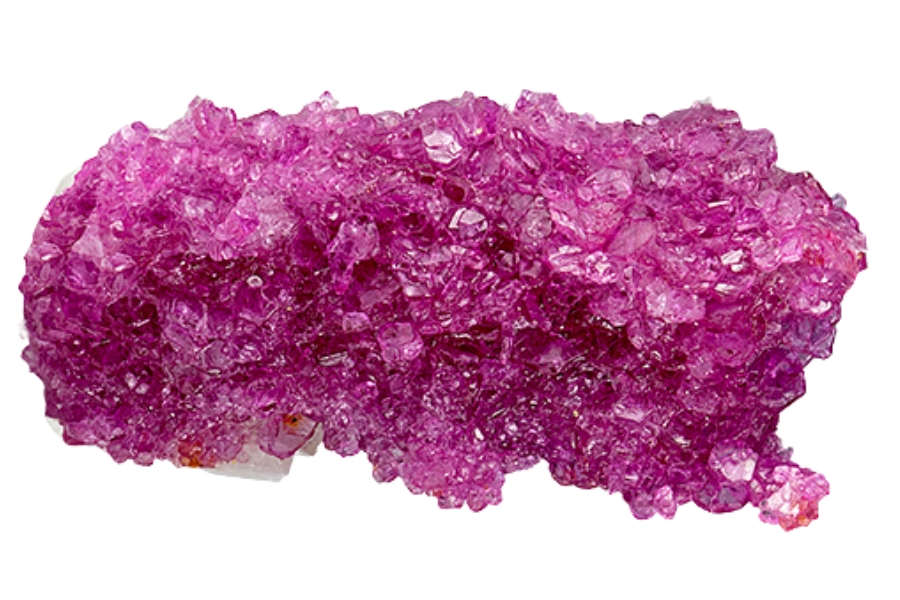With their beautiful red color, rubies are one of the most sought-after gemstones in the world. But how can you tell if a ruby is real or just a clever fake? It’s important to know, especially if you want to buy jewelry or add to your collection.
Real rubies are very beautiful and come from deep in the Earth. Fake rubies can be made from different materials that just look like rubies. Sometimes it’s hard to tell if a ruby is real or fake, but you can use some special tips and tricks.
If you want to learn more about rubies or are just starting to become interested in them, this article will review these techniques in great detail. We’ll help you learn more about them, so prepare to become a ruby detective!
Understanding Natural Ruby And Why Fakes Are Common
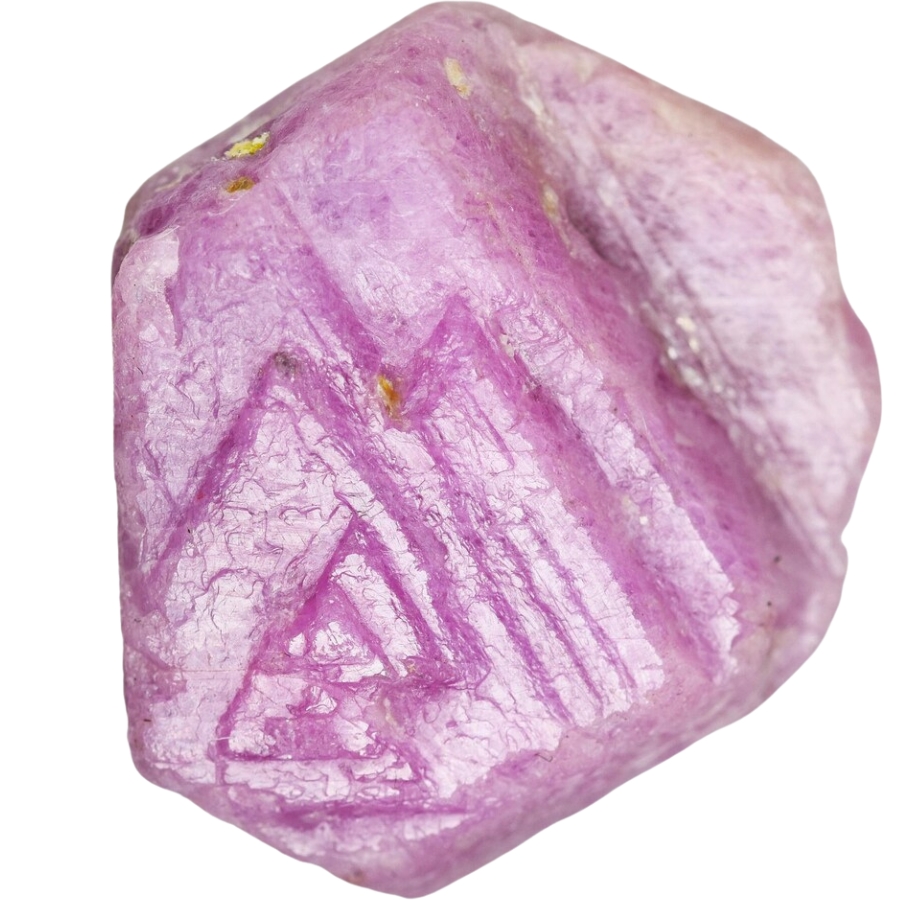
Ruby is a dazzling red gemstone that’s been treasured for thousands of years. It forms underground when elements like chromium, aluminum, and oxygen mix under high heat and pressure. This process takes millions of years!
The chromium is what gives rubies their famous red color. One of the most incredible things about rubies is their hardness. They’re super tough, second only to diamonds.
This makes them great for all kinds of jewelry, like rings, necklaces, and earrings, because they don’t scratch easily.
Another neat feature of rubies is their fluorescence. When you shine ultraviolet light on them, they glow a bright red. This makes them stand out and look even more beautiful. P
People love rubies not just because they’re pretty but also because they’re rare. Finding a high-quality ruby is tough, and that’s why the cost of ruby can be expensive.
Rubies also have a long history and are often associated with royalty and luxury, which adds to their value. All these unique qualities make rubies a favorite for anyone who loves precious stones.
Why you’re seeing more fake ruby these days
Ruby stones are very popular and valuable but are hard to find and cost a lot of money. Because of this, some people make fake rubies that look just like the real thing but cost much less.
This way, more people can buy jewelry that looks like it has real rubies, even if they do not have a lot of money. Also, new technology has made making these fake rubies look very close to real ones easier.
How To Identify Real Pearl
Finding out if a ruby is natural can be both interesting and important, especially if you are into gemstones or want to buy jewelry. Real rubies are known for their bright red color and durability, and fakes have certain features that make them stand out.
In this guide, we will talk about the key features to look for, like color, hardness, and internal flaws, to help you confidently tell the difference between a real and a fake.
To make it easier for you to figure out what rocks you have, we have put together guides to identify rocks and minerals from every state.
Discovering more about a ruby not only helps you buy it wisely, but it also makes you appreciate and enjoy its beauty more.
Check the weight and feel
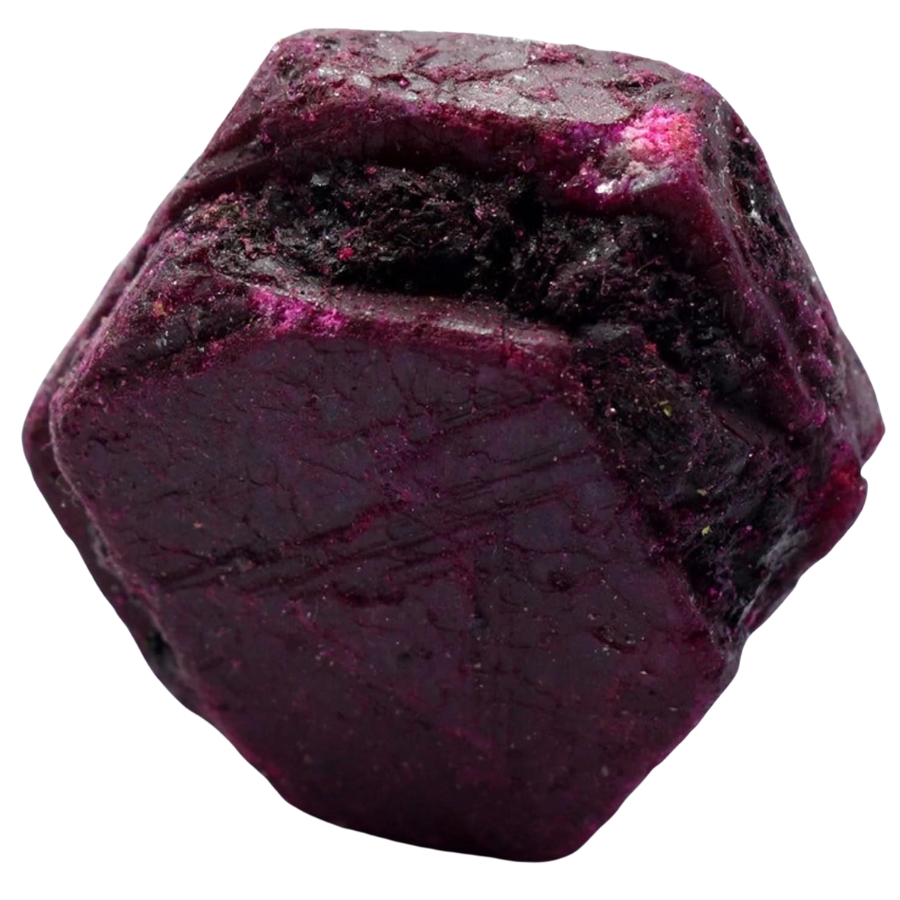
A real ruby is dense and heavy for its size. If you have a real ruby and a fake one of the same size, the real one will feel heavier. You can hold them both and see which one feels heavier.
A real ruby should also be smooth and cold to the touch. It should feel cool and not warm up too quickly if you touch it. Fake rubies, especially ones made of glass or plastic, will warm up faster in your hand and might feel lighter and less smooth.
Remember that real rubies are strong and heavy, so if your ruby feels light or warms up quickly, it might not be real.
Another trick is to gently tap the ruby against your teeth. Real rubies feel different from glass or plastic fakes when tapped against your teeth. Just be careful not to bite or scratch the stone.
Finally, if you have a scale that can measure small weights, you can compare the stone’s weight to the known weight of a real ruby of the same size. If the weights are very different, that is a sign that it is not real.
Do a hardness test
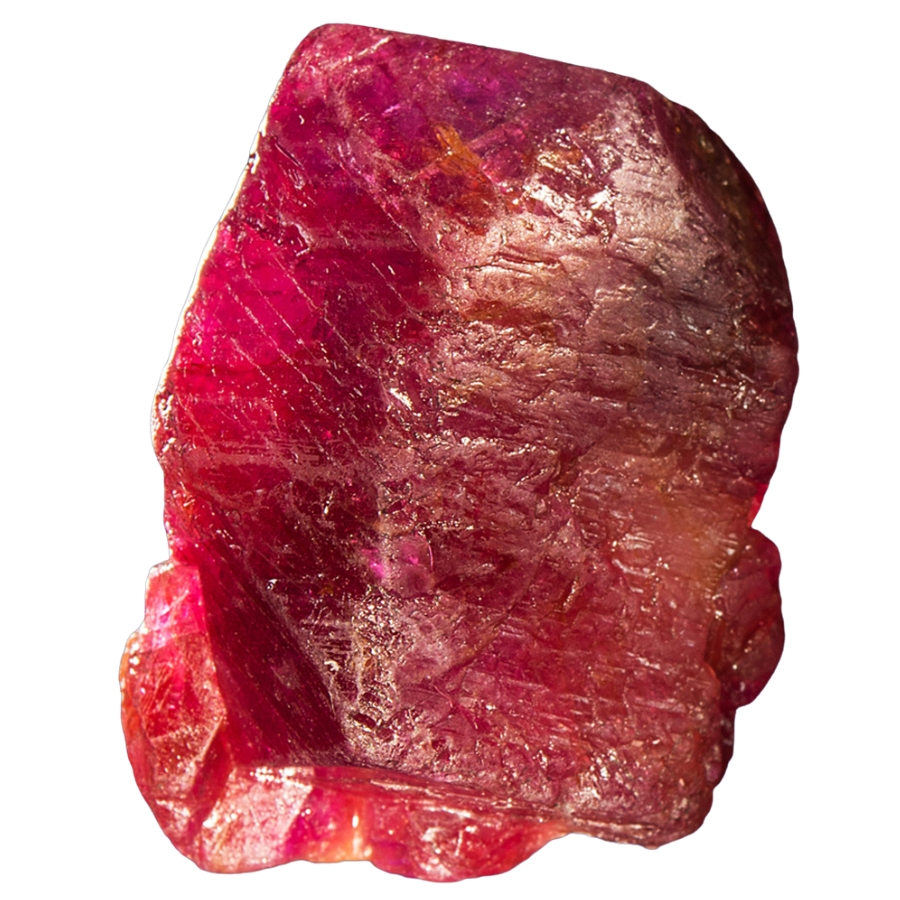
You must know about the Mohs scale to test a ruby’s hardness. This scale rates minerals based on how easily they can be scratched or scratched by other things.
A real ruby has a 9 out of 10 rating, which means that not many things can scratch it. A steel nail or a piece of glass is about 5 or 5.5 on the Mohs scale, so you can use them to test this.
If you gently try to scratch the ruby with the nail or glass, the real ruby should not get scratched. Just be careful not to press too hard, because you do not want to damage the stone, real or fake.
But keep in mind that testing a stone’s hardness can be dangerous. You could damage it by mistake, especially if it’s a fake. Also, some fake rubies are made of materials that are also pretty hard.
Examine light reflection
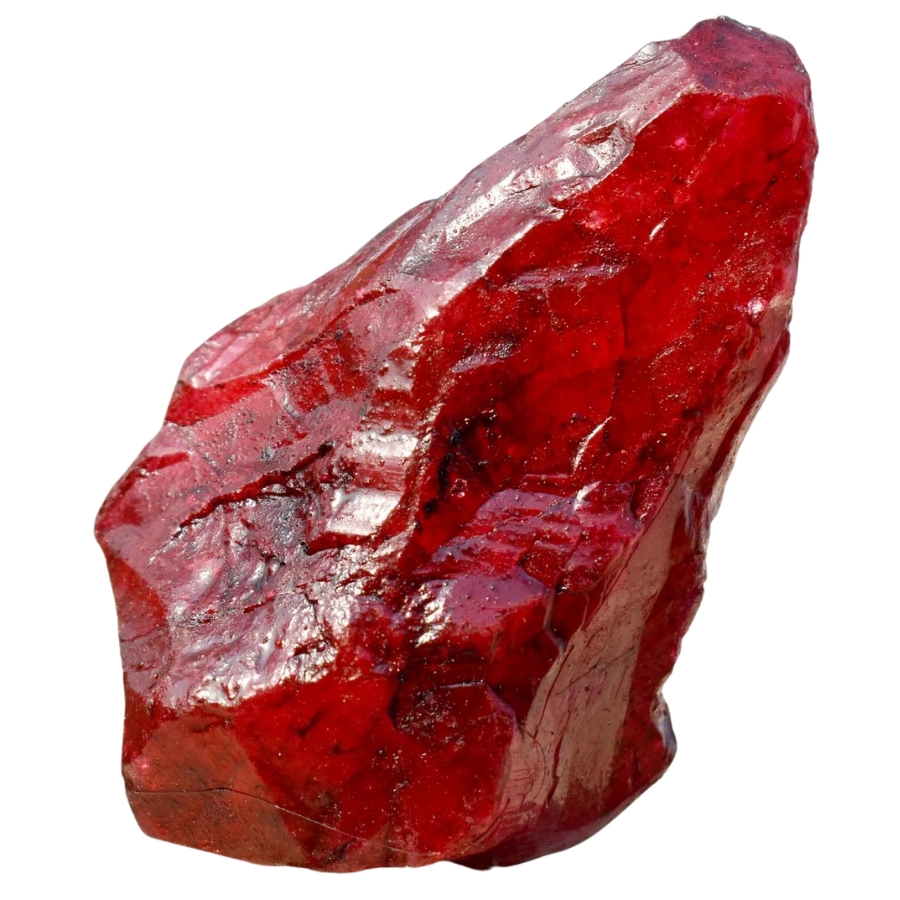
Real ruby photo provided by gemstells
You can tell if a ruby is real or fake by looking at how light bounces off of it. To do this, find a bright light, like the sun or a lamp, and hold the ruby under it. Slowly turn it around and watch how the light bounces off and goes through it.
Astrism means that when light hits a real ruby, you might see a pattern resembling stars. Not all real rubies have this, but it’s a good sign if you do. Real rubies should also sparkle in a deep red color.
If the ruby is real, you will see bright red flashes along with some darker, shadowy areas. This is how the light moves through the ruby’s crystal structure.
Watch out, though! Some fake rubies can sparkle and reflect light, but not as well as real ones. They might not sparkle like real rubies, and their red color might not look as deep and rich as a real one’s. They also might not have those dark spots.
Look at flaws and inclusions
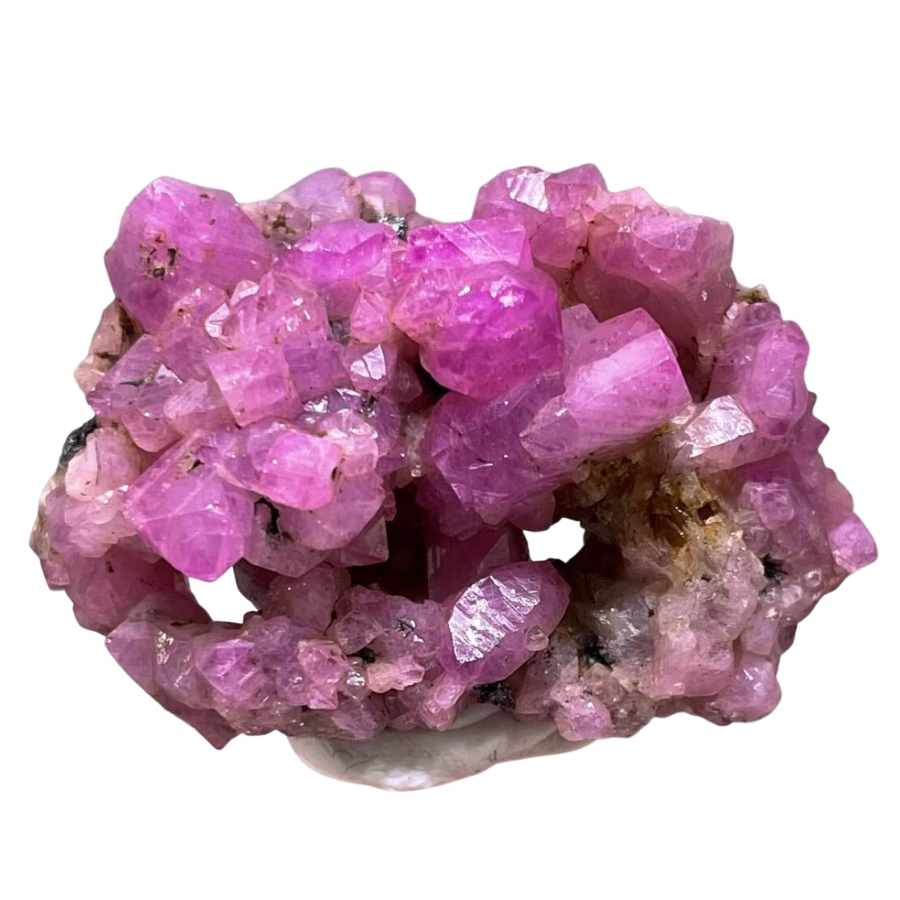
You can tell if a ruby is real by looking at its flaws and inclusions. Inclusions are tiny marks or spots inside the ruby; most real ones have them. These flaws happen naturally when the ruby is being formed deep in the Earth.
Hold the ruby up to the light to look for inclusions and look through the loupe or magnifying glass. Move the ruby around so you can see more of the flaws.
Now, here’s the thing: if the ruby looks perfect, like it has no flaws at all, it might not be real. Man-made synthetic rubies often do not have these flaws so that they can look too good.
But remember that a ruby’s inclusions do not always mean it’s real. Marks can be added to fake rubies to make them look like inclusions. That’s why you should also check the ruby’s color and feel.
Observe color and appearance
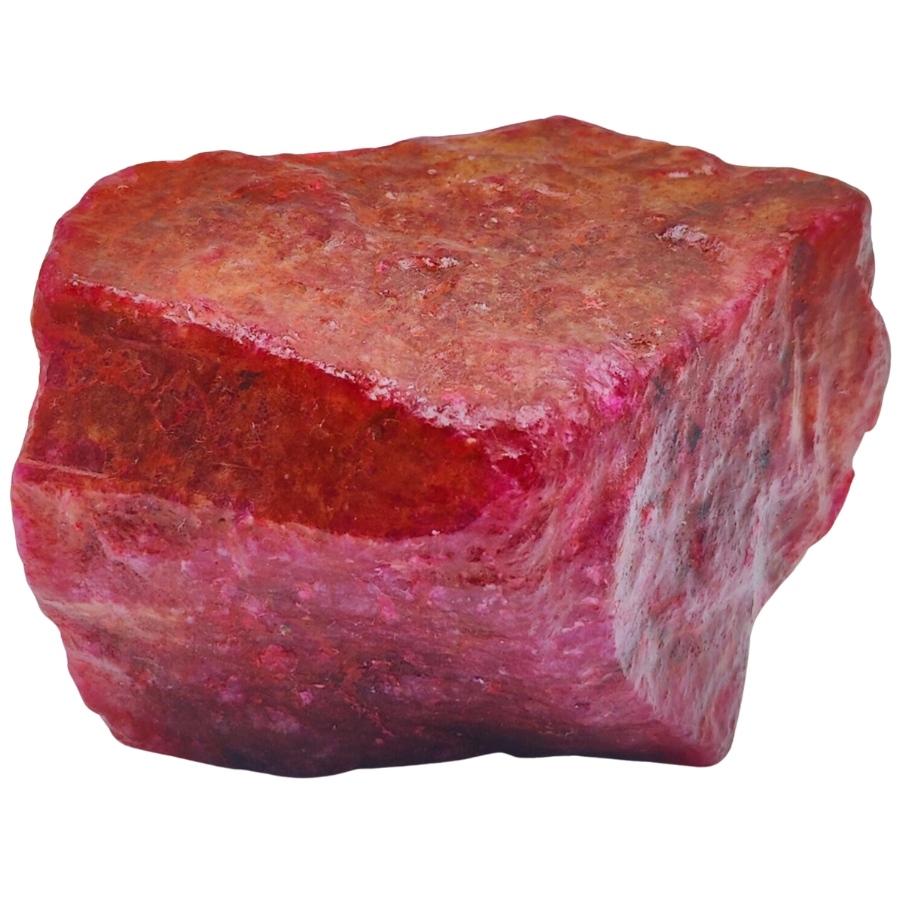
One of the best ways to tell if a ruby is a ruby is by looking at its color and shape. Real rubies are a deep, rich red color. This color is sometimes called “pigeon’s blood red,” a fancy word for a bright, slightly purple red.
The color should be the same throughout the ruby, but some natural variations may exist. These are small changes in the red color that happen naturally in natural stones.
On the other hand, fake rubies might not be that deep red color; they could be too light or too dark. Since some fake rubies are made of glass or plastic, they might have streaks or spots of color that do not look natural.
They might also look too perfect, like they are all the same color with no natural differences. If you are unsure about a ruby’s color or look, compare it to a real one.
The Different Types Of Fake Ruby And What They Look Like
There are many kinds of fake rubies; if you do not know what to look for, some of them can look very real. Some fakes are made of glass or plastic, which can shine but does not have the same deep red color and feel as a real ruby. We’ll talk more about each type below.
Cubic Zirconia
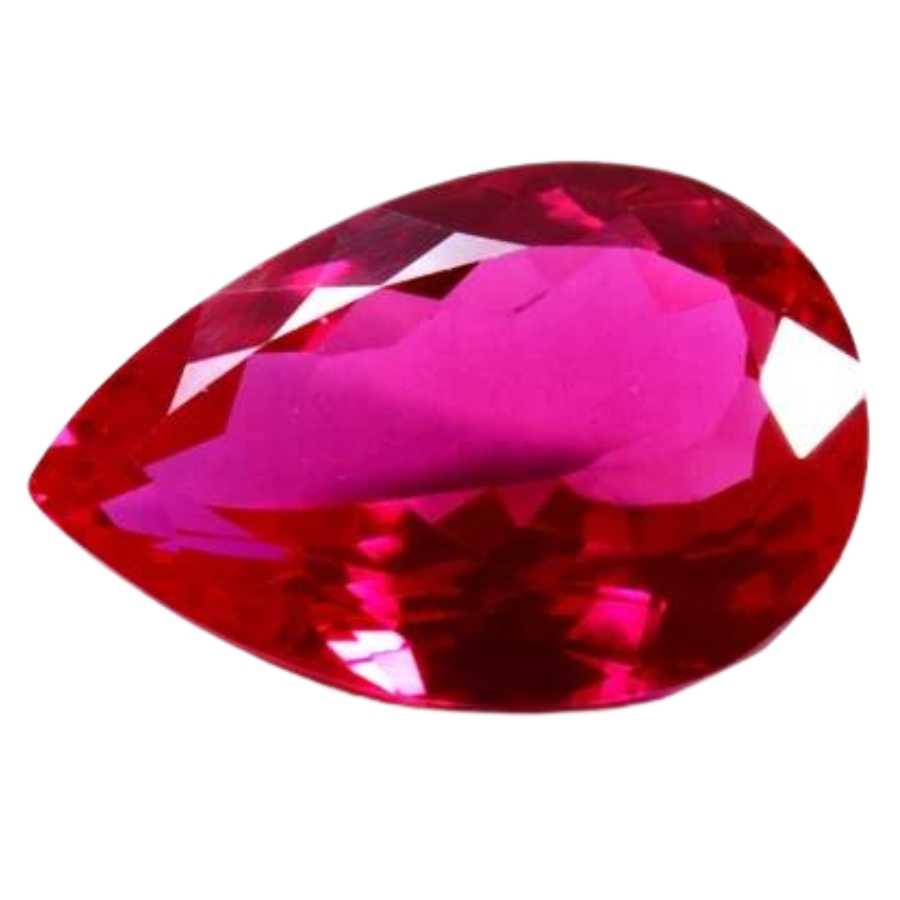
While real rubies are formed in the ground, cubic zirconia (CZ) is made in a lab. To make CZ, a powdery mixture of zirconium oxide and other minerals is heated to a very high temperature—about 4,982 degrees Fahrenheit—which is really hot—hotter than lava!
When the mixture reaches this very high temperature, it melts and turns into a liquid. Formed cubic zirconia crystals are then cut and made into gemstones.
The cutting step is very important because it makes the cubic zirconia sparkle and shine like a real gemstone. It’s cut into different shapes, like the shapes you see in ruby jewelry, using special tools.
How you can identify “cubic zirconia” being sold as real ruby
Check the weight
Cubic zirconia is heavier than real rubies. If you have a scale, you can weigh the stone. A cubic zirconia will weigh significantly more than a real ruby of the same size.
Look at the color and clarity
Cubic zirconia rubies usually have a very bright, almost flawless appearance. Real rubies, on the other hand, often have natural imperfections and a deeper, more complex red color.
Test the hardness
Real rubies are incredibly hard, almost as hard as diamonds. You can try a scratch test; if the stone scratches easily, it’s likely cubic zirconia, which is softer than a real ruby.
Garnet
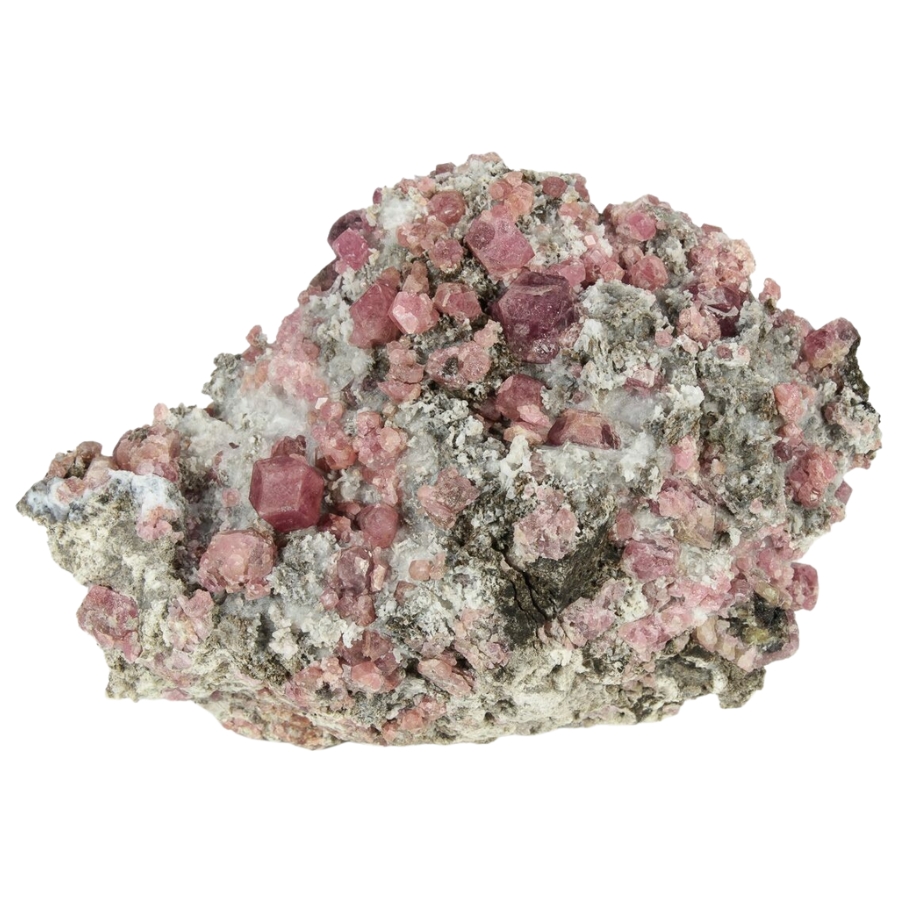
Garnet is a natural gemstone that sometimes gets mistaken for ruby because they can look similar. People do not make garnets; they form naturally in the earth.
They are created over time under high pressure and heat inside the Earth’s crust. This process involves combining minerals and elements found in the earth. When these elements come together just right, they form garnet crystals.
People often mistake deep red garnets for rubies because they look like rubies. But garnets are not as bright red as rubies; they can have a more orange or brownish tone.
Also, garnets are not as hard as rubies; rubies are one of the hardest gemstones, but garnets are a bit softer.
People sometimes sell red garnets as rubies if they look like rubies. This can happen if they do not know the difference or are just trying to make more money by offering the two stones as one.
How you can identify “garnet” being sold as real ruby
Check for light reflections
When you move a ruby under a light, it should show bright red flashes. Garnets, on the other hand, often reflect colors like yellow or green along with red. This difference in light reflection can help you tell them apart.
Examine the color
Garnets usually have a deeper, darker red compared to rubies. Rubies often have a more vibrant, brighter red. It will likely be garnet if the stone looks almost burgundy or brownish-red.
Perform a hardness test
Rubies are hard, almost as hard as diamonds, so they don’t scratch easily. Garnets are softer in comparison. If a coin or piece of metal scratches the stone, it’s probably not a ruby but could be garnet.
Glass Ruby
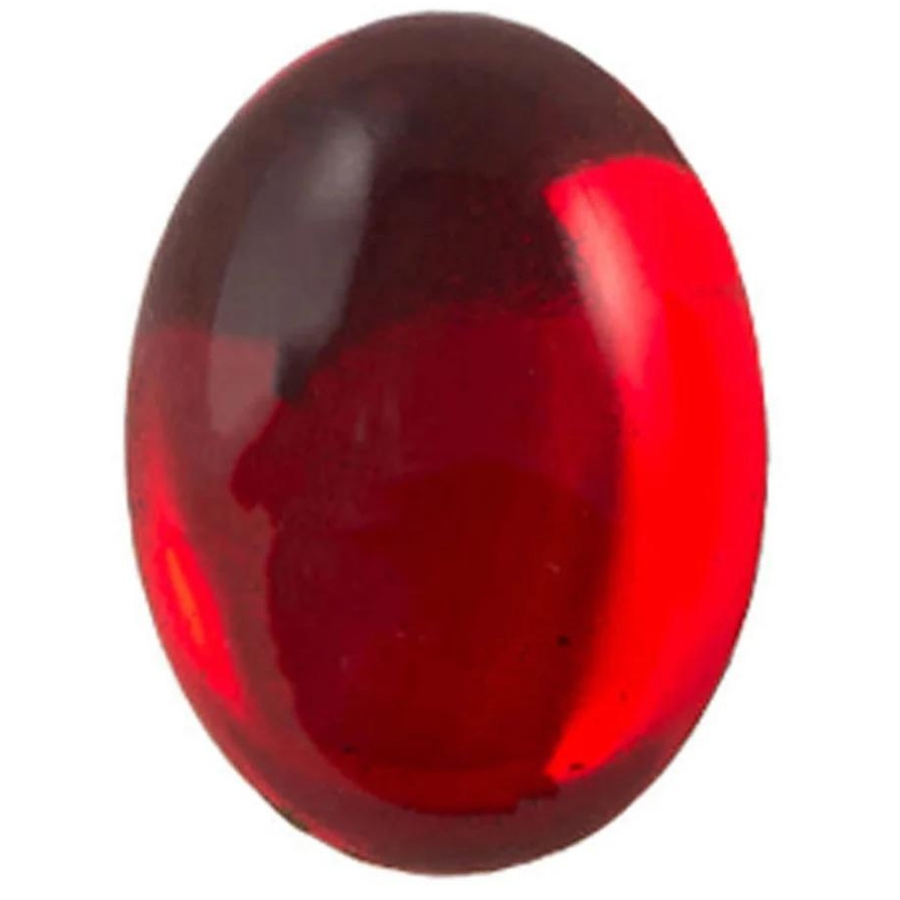
Instead of being formed naturally in the earth like genuine rubies, glass rubies are man-made imitations made from ordinary glass, a mixture of sand, soda ash, and limestone.
Red coloring is added to the glass to give it the appearance of a ruby; this coloring can be any paint or dye mixed into the glass during the melting process.
All of these ingredients are first melted together in a furnace that must be extremely hot—so hot that it converts everything into a liquid.
After the ingredients are melted and combined, the red color is added, and the mixture is cooled until it starts to solidify into glass.
Glass rubies are an excellent option for costume jewelry or for those who want the look of a ruby without breaking the bank. Still, it’s essential to understand that glass rubies differ from natural, rare, and valuable gemstones.
Glass rubies can be beautiful and shiny but are less complex or valuable than natural ones.
How you can identify “glass ruby” being sold as real ruby
Check for scratches
Glass rubies scratch much easier than real rubies. If you see scratches or it gets scratched easily, it’s likely glass, not a real ruby. Real rubies are super hard and don’t scratch easily.
Feel the weight
Glass pearls are usually heavier than real pearls. If the pearls feel surprisingly heavy for their size, they might be made of glass.
Inspect under magnification
You might see bubbles inside when you look at a glass ruby under a magnifying glass. Real rubies don’t have these bubbles because they’re formed naturally, unlike glass.
Red Spinel
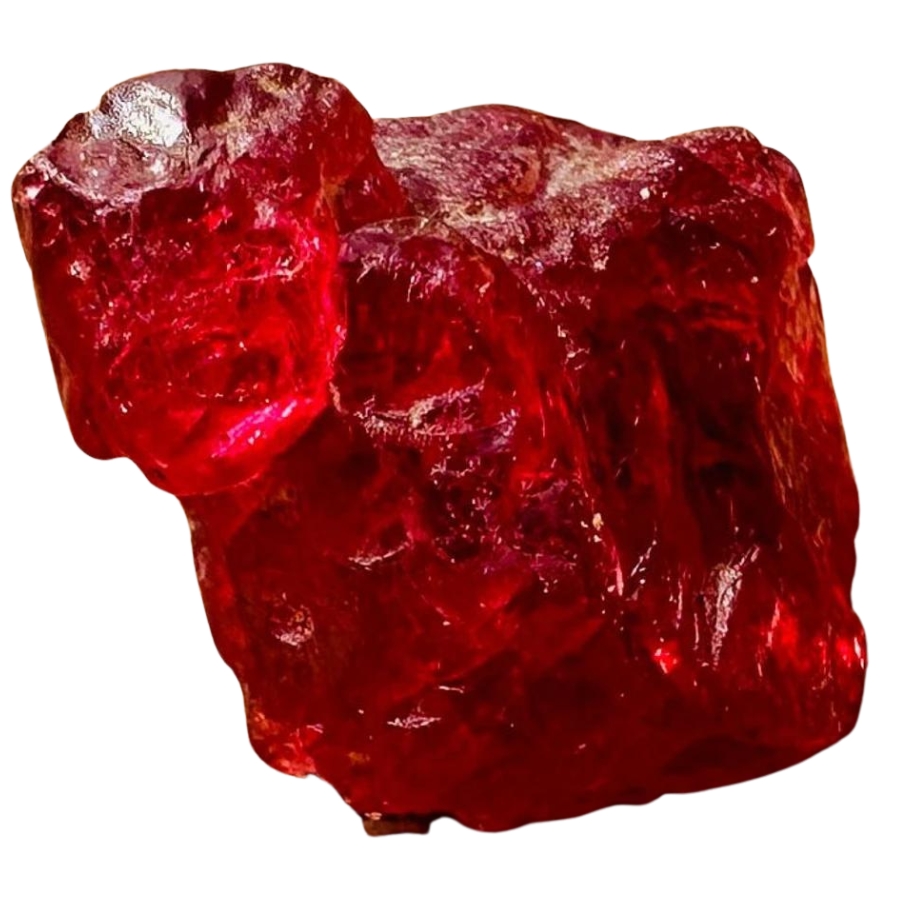
Red spinel is a naturally occurring gemstone similar to rubies but forms differently on earth. It’s created when certain rocks get extremely hot and undergo changes caused by magma, the extremely hot liquid rock inside the earth.
The combination of this heat and the minerals in the rocks forms red spinel crystals.
Magnesium is a mineral that is one of the main components of red spinel. It’s mixed with other elements, such as oxygen, and occasionally with iron or chromium (chromium is responsible for the red color of the spinel).
All of these elements come together under high pressure and heat in the earth’s crust, and over time, they grow into red spinel crystals.
Although red spinel and rubies can both have brilliant red colors, there are several differences between the two: red spinel typically lacks the deep, purplish-red color that rubies have, and it’s not as hard.
While red spinel is a beautiful gemstone on its own, it’s important to know that it’s not the same as a real ruby. Real rubies are rarer and more valuable than red spinel.
If you are looking for a real ruby, having it checked by a professional who knows about gemstones is a good idea.
Red spinel is sometimes used or sold as a kind of ruby because it’s pretty and less expensive. It can be cut into different shapes and used in jewelry like rubies.
How you can identify “red spinel” being sold as real ruby
Do a hardness test
Rubies are one of the hardest gemstones, just below diamonds. Spinel, while still hard, is a bit softer. If the stone scratches more easily than you’d expect from a ruby, it might be spinel.
Examine the color
Red spinel can look a lot like ruby, but its red is usually a bit different. Rubies have a deep, vivid red with hints of blue, while spinel is often a brighter, more pure red without those blue hints.
Look at the reflections
When you look closely at a ruby under light, you’ll see bright red and blue reflections inside the stone. Red spinel, however, tends to reflect more orange or pink colors and red.
This difference in how the stone plays with light can help you tell them apart.
Synthetic Corundum
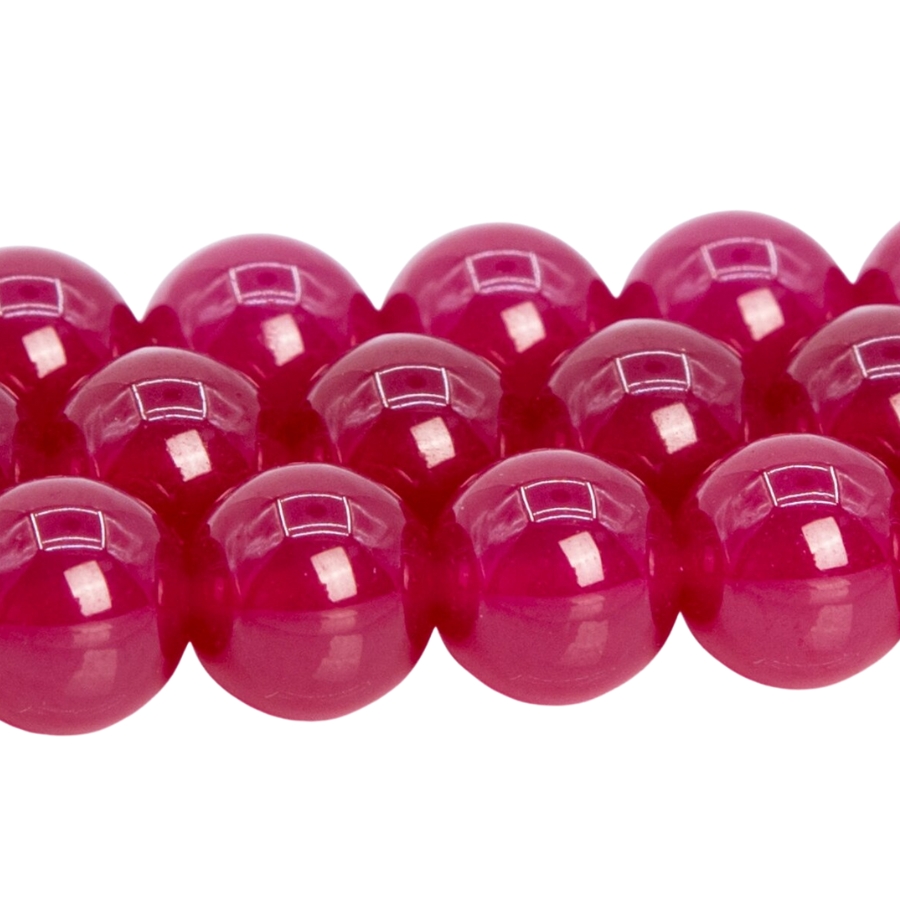
“Synthetic corundum” refers to a man-made substitute for the natural corundum mineral.
Scientists create synthetic corundum in a lab setting using a process that begins with a mixture of chemicals, including aluminum oxide, the main component of corundum, and a small amount of chromium to give it a red color similar to a ruby.
The mixture is melted at a temperature exceeding 2000 degrees Fahrenheit, hotter than volcano lava!
Once completely melted, the mixture forms a liquid that is slowly cooled, and as it does so, crystals begin to form—the synthetic corundum—that is, crystals designed to resemble real ruby crystals.
How you can identify “synthetic corundum” being sold as real ruby
Check for flaws and inclusions
Look at the color of each pearl. Real pearls have subtle variations in color and luster, but shell pearls often have a very consistent, uniform color which can be a giveaway that they’re not real.
Examine under UV light
When you touch shell pearls, they might feel smoother than real pearls. Real pearls have a slight grittiness, while shell pearls are often polished to be very smooth.
Look at the color
Shell pearls are often too perfect looking. They usually have exactly the same size and shape, which is rare in real pearls that have natural variations.
How To Tell If Ruby Is Real Vs Fake
In this section, we will talk about the main differences between real and fake ruby and show you how to confidently tell the difference between ruby in your collection or while shopping.
How To Identify Fake Ruby When It’s Cut Or Polished
It can be hard to tell the difference between a real ruby and a fake one, especially if it’s been cut and polished. Cut and polished fake rubies can sometimes look a lot like real ones, with their bright red color and shiny finish. In this guide, we will look at some key ways to tell the difference.
Check color and shine
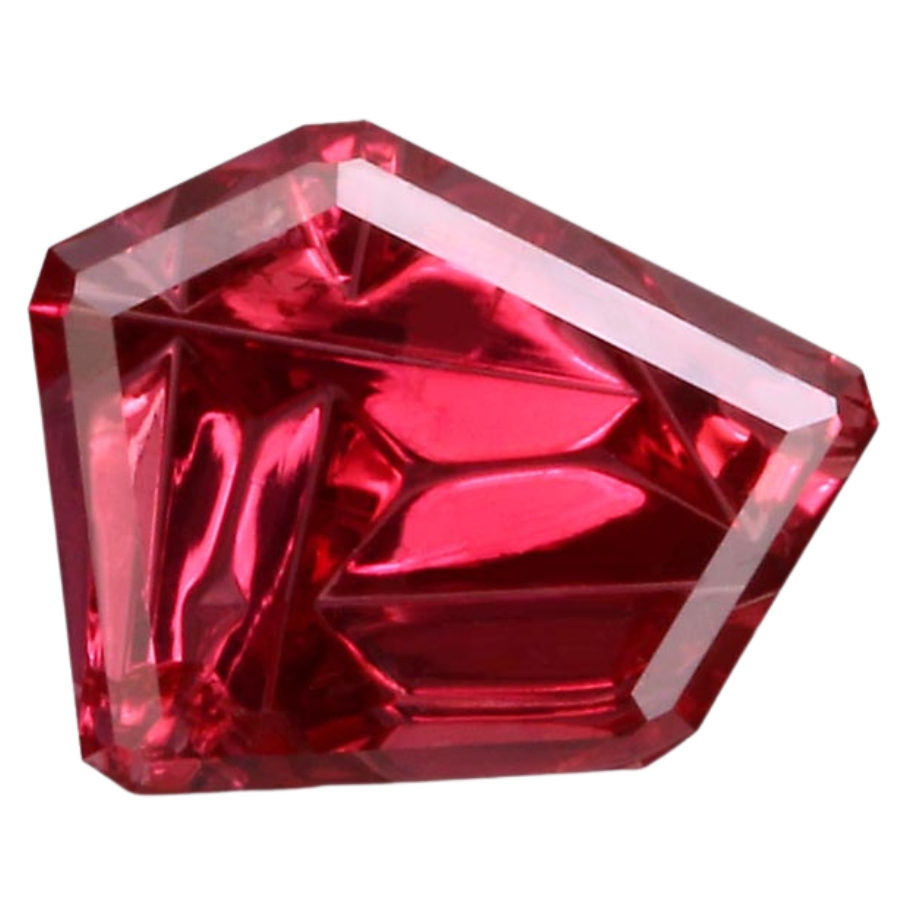
To tell if a cut and polished ruby is real or not, look at its color first. Real rubies are a deep, vivid red color. This color is sometimes called “pigeon’s blood red,” and it has a bit of blue or purple in it.
If the ruby is too bright red, like tomato red, or if it looks pink, orange, or any other color, it might be fake.
Next, check the ruby’s shine. Real rubies have a unique shine that makes them sparkle in a deep, rich way when you move them in the light. The shine should look deep, almost like the light is coming from inside the ruby.
If the shine looks more like glass or plastic, or if it’s too shiny, like it’s reflecting too much light, it might not be real. Real rubies also have a glow to them, especially in the sun.
Inspect for flaws and inclusions
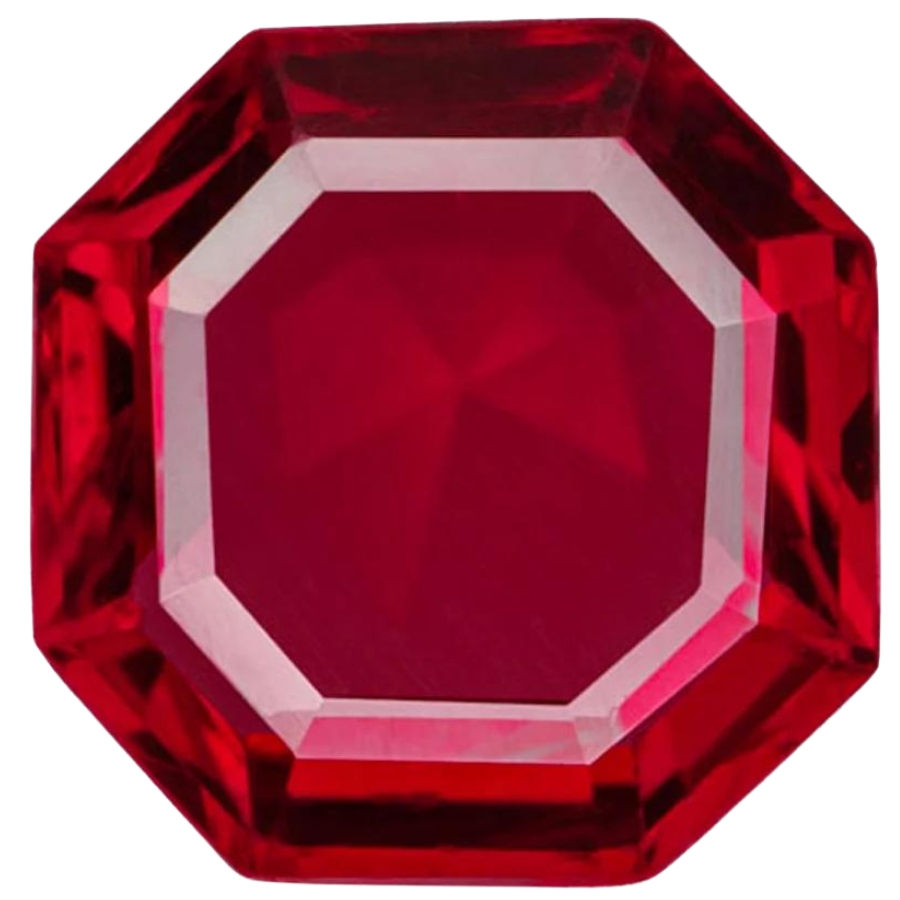
A good way to tell if a cut and polished ruby is real or fake is to look for flaws and inclusions, which are tiny marks, spots, or lines inside the ruby. Real rubies almost always have these flaws because that is how they were made.
If you look at a real ruby closely, maybe with a magnifying glass, you will see these tiny flaws. They can look like little lines, cloudy spots, or tiny crystals inside the ruby.
If the ruby looks flawless, with no flaws or inclusions, it may not be real. This is because fake rubies, especially those made in a lab, are made to look flawless.
However, keep in mind that some real rubies have very few inclusions, so this is not the only thing you should look for.
Also, some very good fake gems may have fake flaws that make them look real. That is why it’s important to check more than just inclusions, like color and hardness, or ask a professional if you are not sure.
Test the hardness
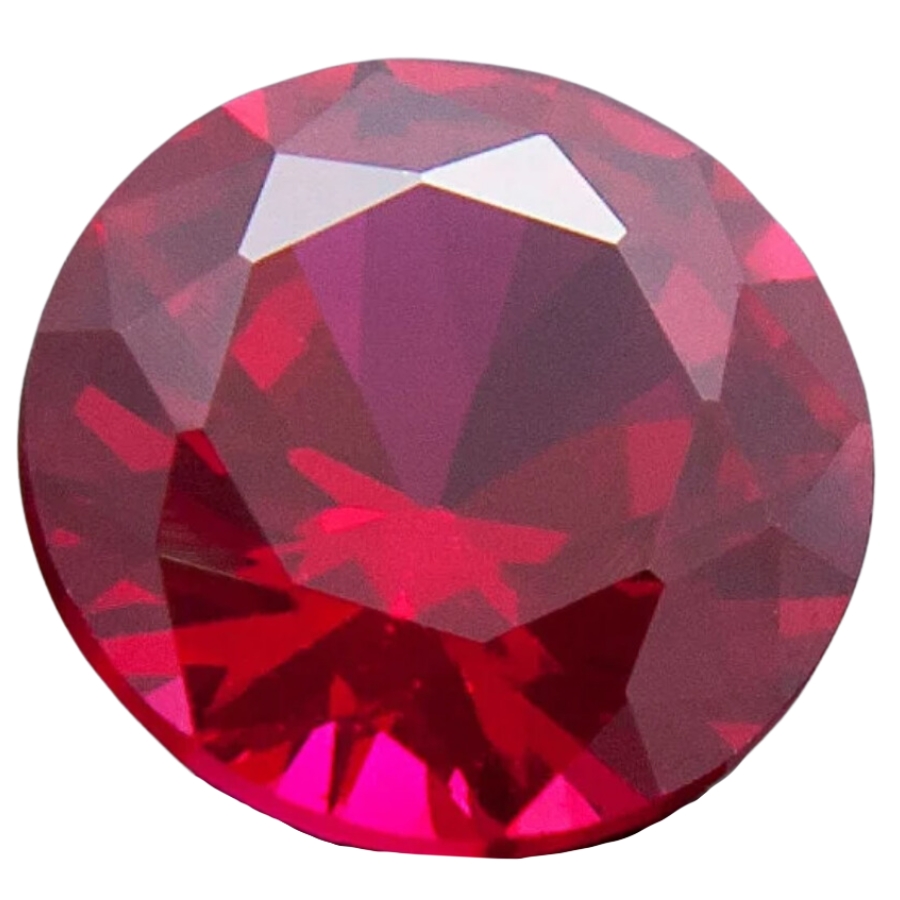
One way to tell if a cut and polished ruby is real or fake is to test its hardness. Real rubies are very hard—almost as hard as diamonds. To do this test, use something softer than a ruby, like a copper coin, and gently scratch the surface of the ruby.
If the ruby gets scratched, it’s probably not real—a real ruby is too hard for a coin to scratch.
But be careful not to damage the ruby, especially if it turns out to be real. Some fake rubies are made of materials that are also pretty hard, so they might not scratch easily either.
That is why you should look at other things, like the color and any inclusions, or get help from a jeweler, who has special tools to test hardness without hurting the stone.
How To Identify Fake Ruby When It’s Raw
Find fake rubies in their natural, unprocessed state. You need to be able to do this if you want to know if your jewelry is authentic.
We will talk about how to tell the difference between real and fake rubies in their natural state. We will focus on the most important signs of a ruby’s authenticity.
Evaluate density and weight
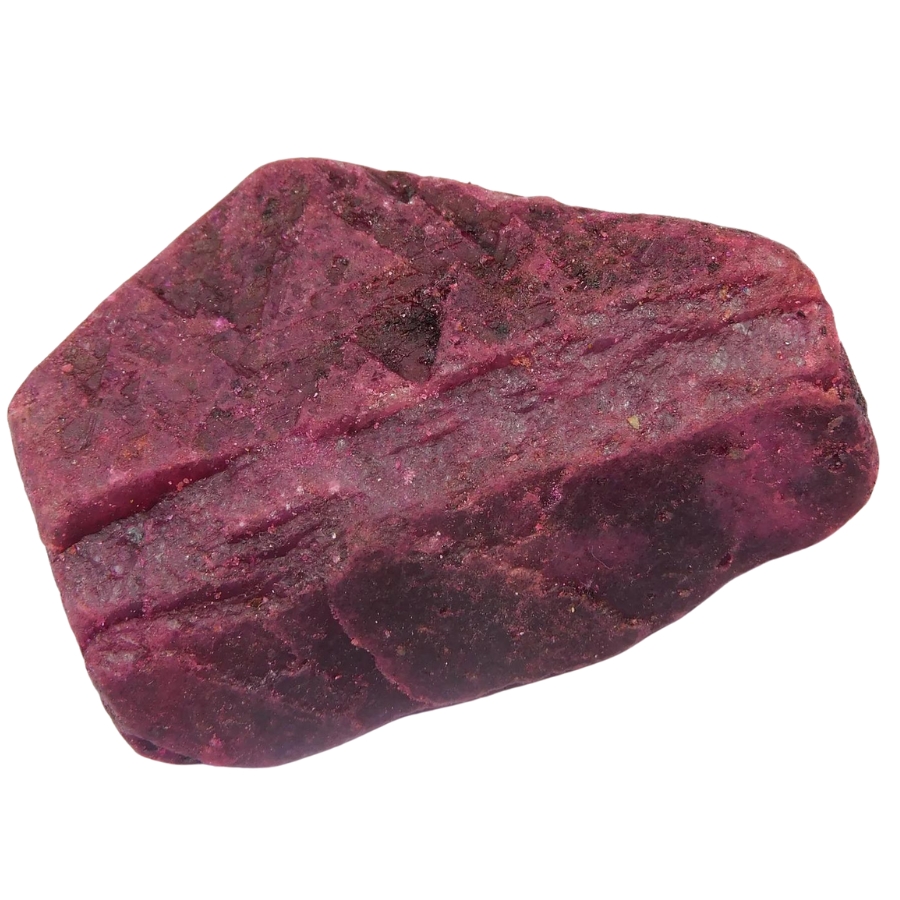
A good way to tell if a raw ruby is real or fake is to look at its density and weight. Real rubies are dense, which means they have a lot of material packed into a small space.
If you have a raw ruby, hold it in your hand; it should feel heavier than you would expect for its size.
If you can, put the ruby next to another stone that is about the same size. If it’s real, the ruby should feel heavier than the other stone, unless the other stone is also a dense gemstone.
You can also put the ruby next to a piece of glass or plastic that is the same size. But keep in mind that feeling the weight alone is not enough to be sure.
Some fake rubies are made to feel heavy to trick you, so it’s also important to look at other things, like the color and any flaws or inclusions.
If you are still not sure, a jeweler or gemologist can help. They have special scales and tools to find out the exact density and weight.
Feel the thermal conductivity
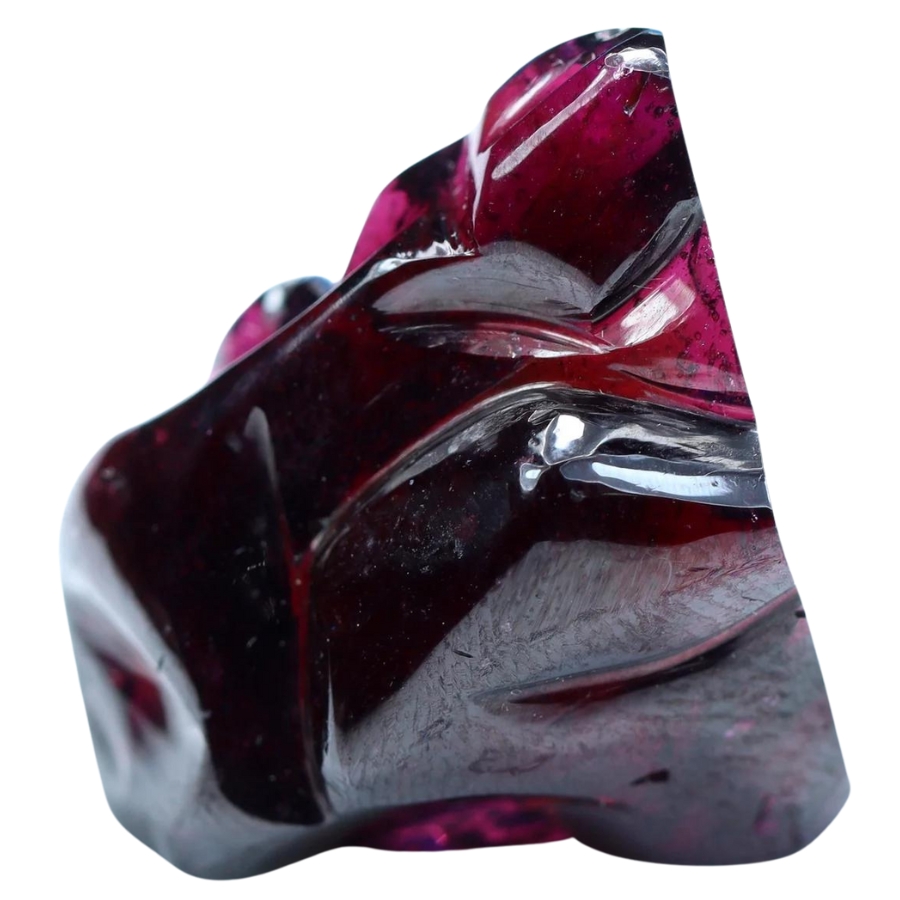
There is another cool way to tell if a raw ruby is real or fake. This might sound hard, but it’s just about how the ruby feels when it comes to temperature.
Real rubies are good at conducting heat, which means they can quickly take heat away. To test this, hold the ruby in your hand for a few minutes. It should feel cool and not warm up too quickly.
You can also breathe on it like you would a glass to make it foggy. If the ruby is real, the fog from your breath should go away quickly, almost right away, because the ruby is quickly removing the heat from your breath.
If the fake ruby is made of glass or plastic, it will not conduct heat as well, so it will stay fogged up longer and might warm up faster in your hand. Keep in mind that this is not a perfect test; some fakes might still feel cool or clear the fog quickly.
Check other things, like the weight and color, or ask someone who knows a lot about gemstones for help.
See how it reacts to light
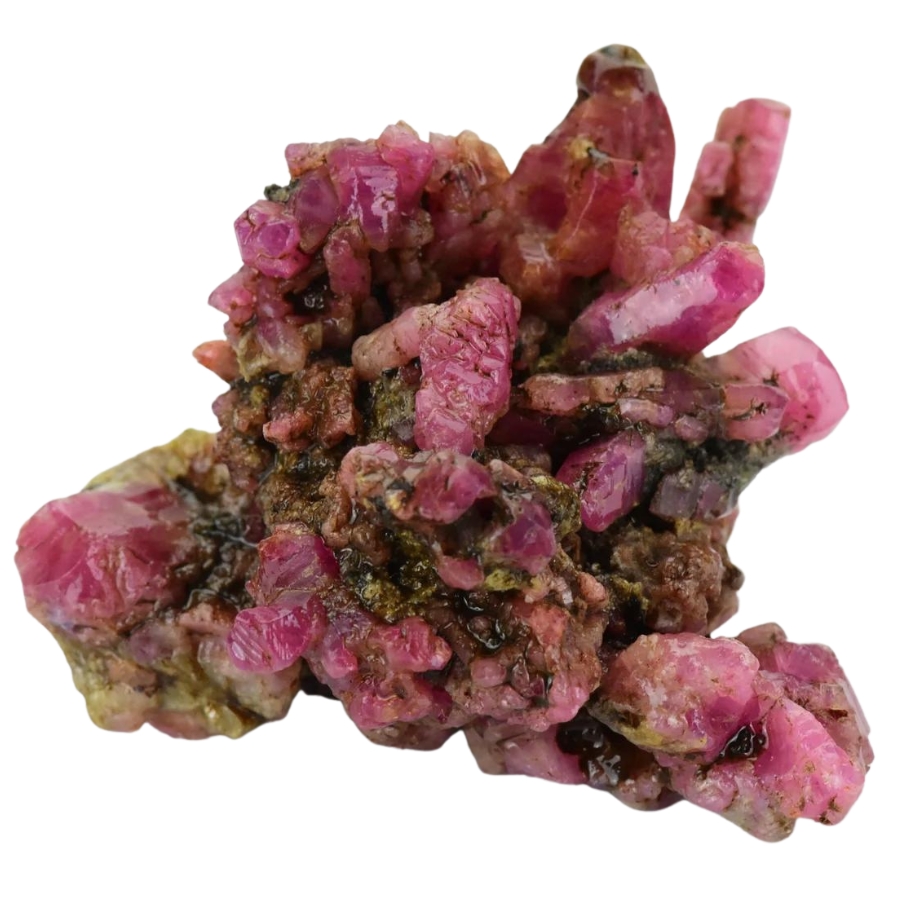
To tell if a ruby is real or fake, hold it up to a light source, like the sun or a lamp, and watch how the light shines through it and bounces off of it. Real rubies behave differently with light because of how they are made.
Real rubies usually have a deep, rich red color that looks even better in light. Some may even glow a little, especially in the sun. This is called fluorescence, and it means that when certain light hits a ruby, it kind of lights up from the inside.
If you look at fake rubies, like those made of glass, they might not react to light the same way real ones do. They might look dull or lack that special glow, and their color might look too bright or not deep enough.
Remember that this is just one way to tell if a ruby is real. You should also check its weight and see if it has any flaws, or you can ask a gem expert for help.

